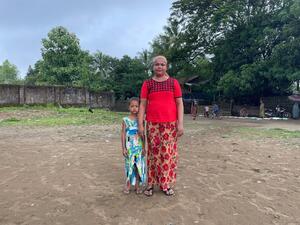UNHCR concerned about conditions in IDP sites in Sri Lanka
UNHCR concerned about conditions in IDP sites in Sri Lanka
As the fighting in north-east Sri Lanka comes to an end, the scale of the challenges facing UNHCR and other humanitarian agencies on the ground become more apparent. It is now estimated that up to 80,000 people have left the former fighting zone in the last three days, which brings the total who have fled the fighting in the last several months to 280,000.
Some 230,000 have been screened and registered and are currently accommodated in 41 sites spread across four districts. Another 50,000 people are undergoing screening and registration at various points and awaiting transportation to the sites.
The Government of Sri Lanka is facing great challenges in providing assistance to the internally displaced population. There are several issues that need urgent attention, including overcrowding and the limited services available at the camps. UNHCR and its partners continue to support the government in this process.
Civilians coming out of the conflict zone are sick, hungry and suffering from acute malnourishment and dehydration. Conditions at Omanthai school, where screening and registration takes place, have been described as sub-standard in terms of hygiene, health and shelter.
This latest massive influx of people, who have endured extreme conditions, will put an even greater strain on the IDP sites in Vavuniya, Jaffna and Trincomalee, which are already buckling under the pressure of the existing population.
UNHCR has put up 25,000 emergency shelters and is putting up an additional 10,000 to accommodate the tens of thousands of civilians who have left the combat zone and who are expected to arrive seeking shelter in coming days.
Our immediate priority is to support the government in decongesting the camps to allow more space to deliver essential services. Efforts are being hampered by the sheer numbers of IDPs, the speed at which they have been arriving and the limited space available to accommodate them.
In addition, restrictions to enter the IDP sites imposed by the authorities over the weekend are hindering UNHCR's ability to deliver assistance to the IDP sites (a vast area spanning 4,000 acres) in the district of Vavuniya, where a majority of the displaced population has been accommodated. This has undoubtedly hindered our ability to deliver assistance to the population in need.
Our efforts will now focus on stabilizing this population while assisting the government in preparing the conditions conducive for safe return to their areas of origin.








